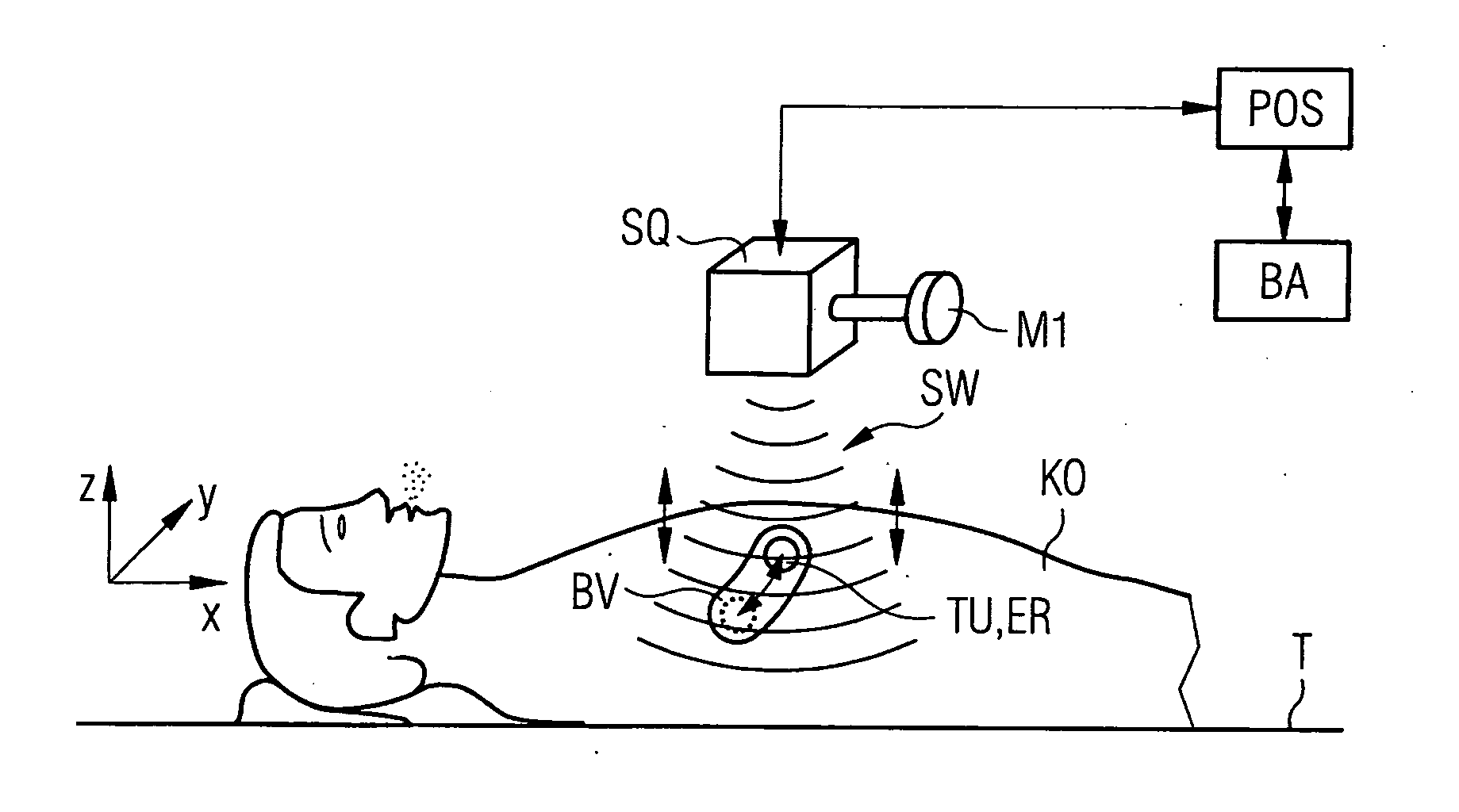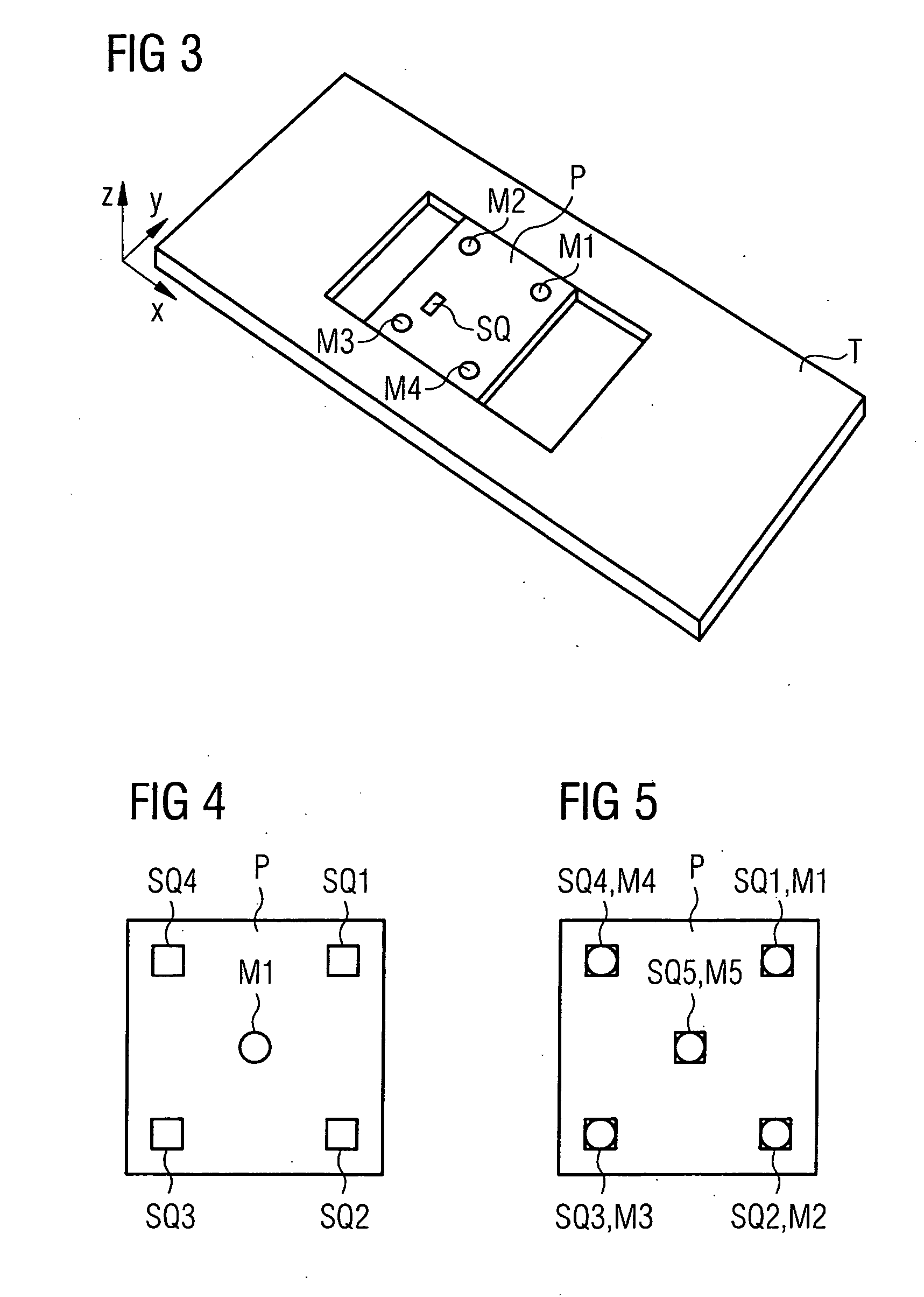Device for spatial localization of a movable part of the body
a technology for movable parts and devices, applied in the field of devices for spatial localization of movable parts of the body, can solve the problems of damage (“invasive”) methods, their complexity, their expense and costs, and remain, and achieve the effects of greater measurement dynamics and/or faster, accurate measurement localization, and fast and easy calculation
- Summary
- Abstract
- Description
- Claims
- Application Information
AI Technical Summary
Benefits of technology
Problems solved by technology
Method used
Image
Examples
Embodiment Construction
[0021]FIG. 1 shows a radiation system BA (only shown symbolically here) such as a linear accelerator for radio-therapeutic treatments, of which at least one beam output or axis is intended to target a tumor TU to be destroyed (here in the chest or lung area) of a person / patient KO lying on a table T. The breathing or the unexpected movement of the person inevitably causes the tumor TU to move relative to the pre-planned radiation target in the body KO and thus forms what is referred to as a movement volume BV which includes all positions of the tumor. Before a radiation therapy is performed it is usual to carry out a computer tomography in the chest or lung so that subsequently a repositioning of the inventive device is facilitated relative to the movement volume BV of the tumor determined thereby. After the computer tomography, the patient is positioned for regular radio-therapeutic treatments on the table T or another positionable table, if possible, in the same position as for th...
PUM
 Login to View More
Login to View More Abstract
Description
Claims
Application Information
 Login to View More
Login to View More - R&D
- Intellectual Property
- Life Sciences
- Materials
- Tech Scout
- Unparalleled Data Quality
- Higher Quality Content
- 60% Fewer Hallucinations
Browse by: Latest US Patents, China's latest patents, Technical Efficacy Thesaurus, Application Domain, Technology Topic, Popular Technical Reports.
© 2025 PatSnap. All rights reserved.Legal|Privacy policy|Modern Slavery Act Transparency Statement|Sitemap|About US| Contact US: help@patsnap.com



